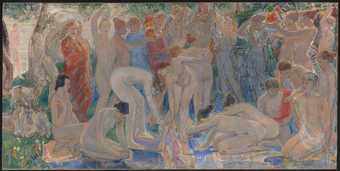
Dame Ethel Walker, Decoration: The Excursion of Nausicaa 1920. Tate.
Ethel Walker
This display shows the work of Ethel Walker, a pioneering artist whose practice was largely forgotten after her death
Ethel Walker (1861–1951) was born in Edinburgh, Scotland, and grew up in London. She started her artistic career later than her peers, enrolling at the Putney Art School in 1899, before attending the Westminster School of Art and Slade School of Art in London. During this period, she travelled to Paris and was inspired by exhibitions of the French Impressionists. However, her interest in art stemmed from an early appreciation of Indian and East Asian artworks. Although she was influenced by several artistic practices, Walker developed her own distinctive style using dynamic brushstrokes and a light palette. She applied this to her portraits, landscapes and large mural-like paintings, known as 'decorations'.
Walker was well-known for her formal portraits, mainly of women. Her decorative works show figurative scenes conveying her interest in Taoist philosophy, Greek and Roman mythology and Christianity. Works such as The Zone of Hate and The Zone of Love, on display in this room, respond to the First World War and include a host of religious references. Meanwhile, The Excursion of Nausicaa focuses on the female form, offering a utopian vision of an all-female society while also exploring themes of same-sex desire. Walker was one of the earliest British artists to overtly address these themes in her works.
In 1900, Walker was the first woman artist elected to the New English Art Club. Later, she was elected as an Associate of the Royal Academy in 1940, before becoming a Dame of the British Empire in 1943. Walker was also the President of the Women’s International Art Club and a key figure in female art networks in London. After her death, The Times newspaper noted in her obituary that Walker had been ‘the most important woman artist of her time’. However, her practice fell into obscurity and is little known today.
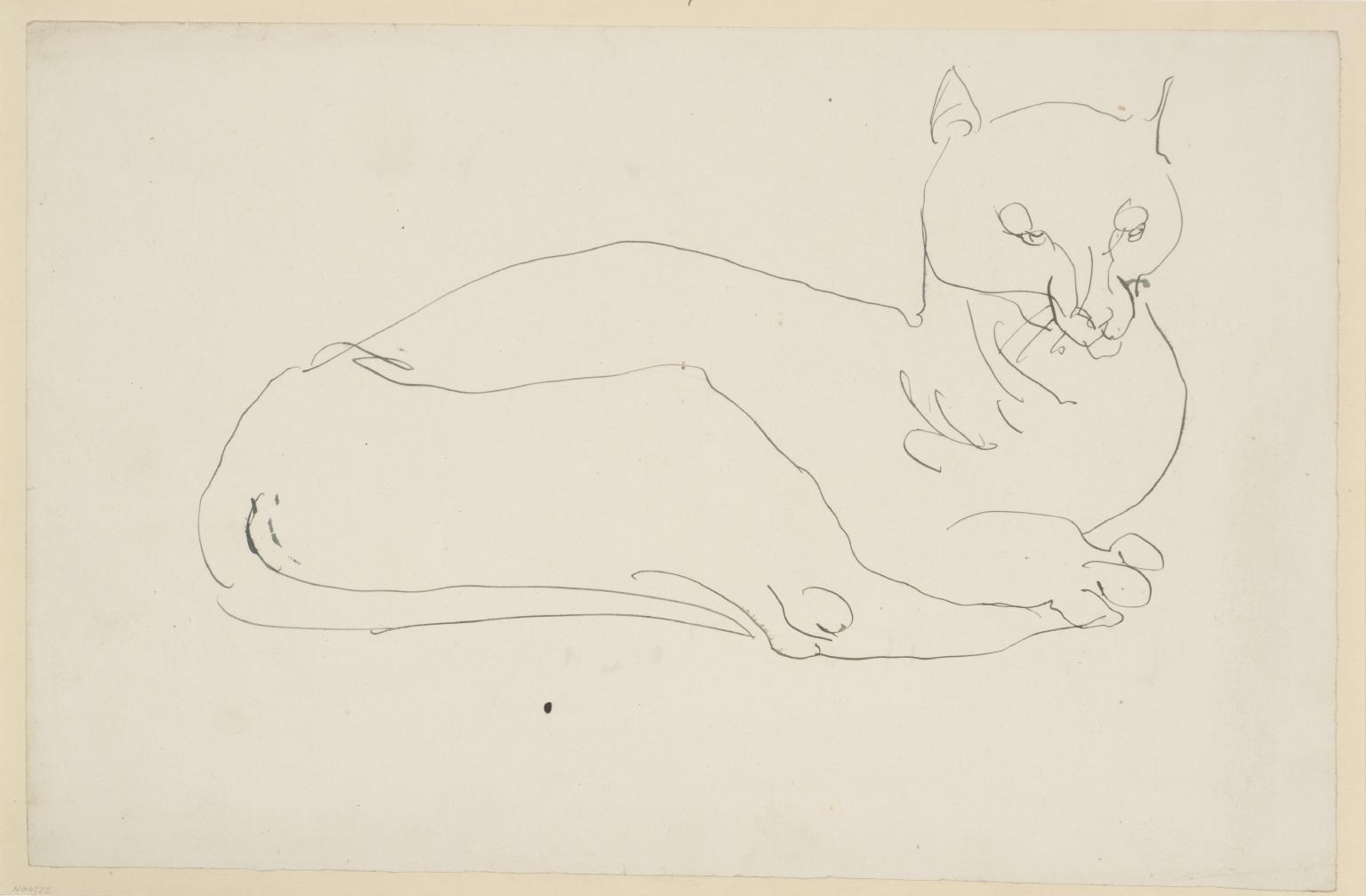
Henri Gaudier-Brzeska, Leopard I &²Ô²ú²õ±è;³¦.1912–13
For Gaudier-Brzeska, animals provided as much fascination as people. He produced an extraordinary number of animal drawings, studying their movement and behaviour in much the same way as he approached his human subjects. As well as observing birds and deer in the park, Gaudier-Brzeska regularly visited London Zoo, sketching the animals so quickly that the ink was often still wet as he turned the page. These drawings manage to capture the anatomy and personality of each animal with only a few simple lines.
Gallery label, September 2024
1/21
artworks in Ethel Walker
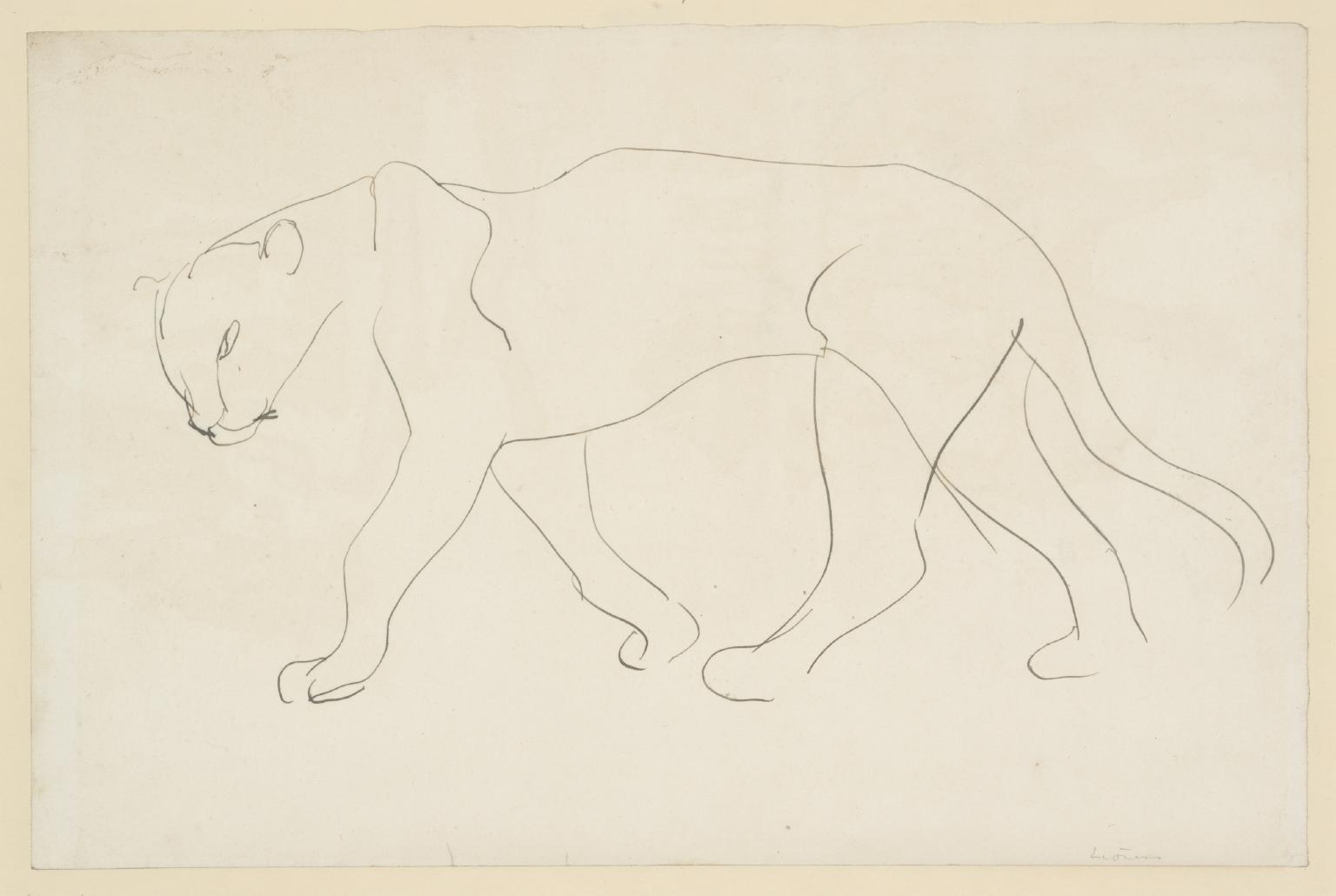
Henri Gaudier-Brzeska, Jaguar &²Ô²ú²õ±è;³¦.1912–13
For Gaudier-Brzeska, animals provided as much fascination as people. He produced an extraordinary number of animal drawings, studying their movement and behaviour in much the same way as he approached his human subjects. As well as observing birds and deer in the park, Gaudier-Brzeska regularly visited London Zoo, sketching the animals so quickly that the ink was often still wet as he turned the page. These drawings manage to capture the anatomy and personality of each animal with only a few simple lines.
Gallery label, September 2024
2/21
artworks in Ethel Walker
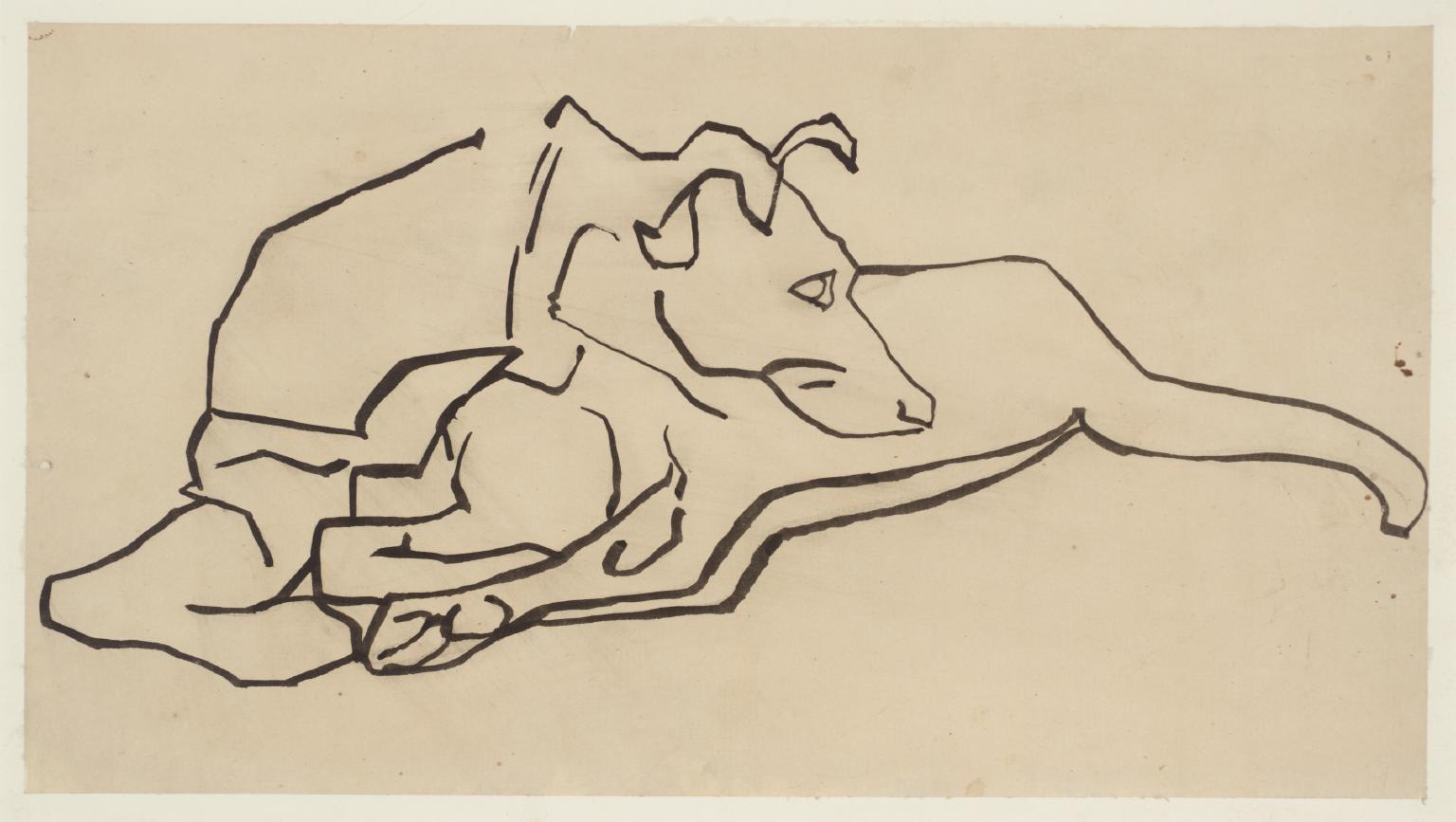
Henri Gaudier-Brzeska, A Dog c.1913
For Gaudier-Brzeska, animals provided as much fascination as people. He produced an extraordinary number of animal drawings, studying their movement and behaviour in much the same way as he approached his human subjects. As well as observing birds and deer in the park, Gaudier-Brzeska regularly visited London Zoo, sketching the animals so quickly that the ink was often still wet as he turned the page. These drawings manage to capture the anatomy and personality of each animal with only a few simple lines.
Gallery label, September 2024
3/21
artworks in Ethel Walker
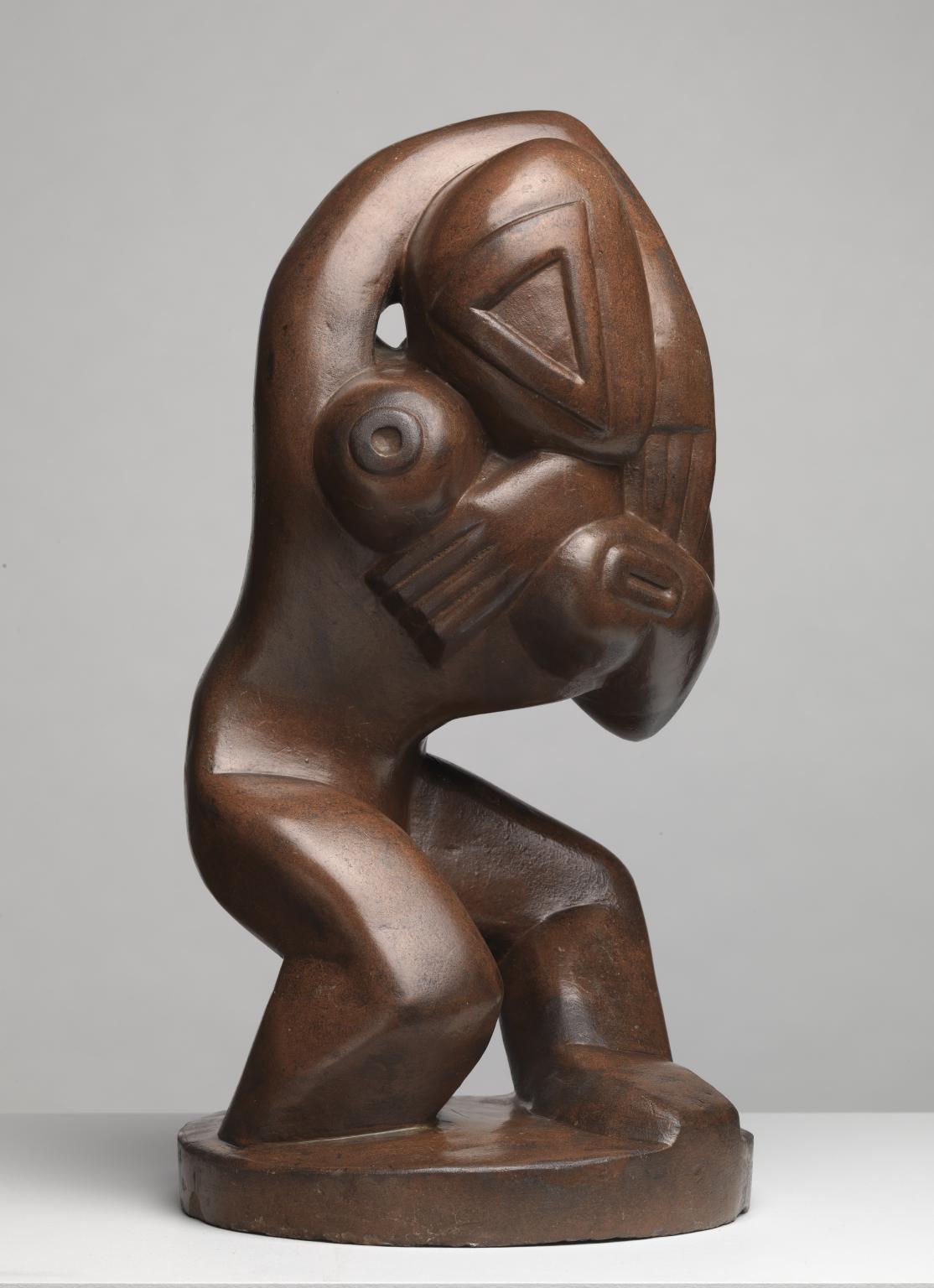
Henri Gaudier-Brzeska, Red Stone Dancer c.1913
This small dancer offers a stark contrast to the fluid elegance of The Dancer, although it was made in the same year. Carved from a single block of stone, the contorted pose creates a sense of contained energy on the brink of release. Gaudier-Brzeska was inspired by modern dance, such as Igor Stravinsky’s ballet The Rite of Spring, which had provoked controversy for its ‘earthbound lurching and stomping’ when it premiered in 1913. The figure is reduced to a series of abstract geometric forms, with a triangle instead of a face.
Gallery label, September 2024
4/21
artworks in Ethel Walker
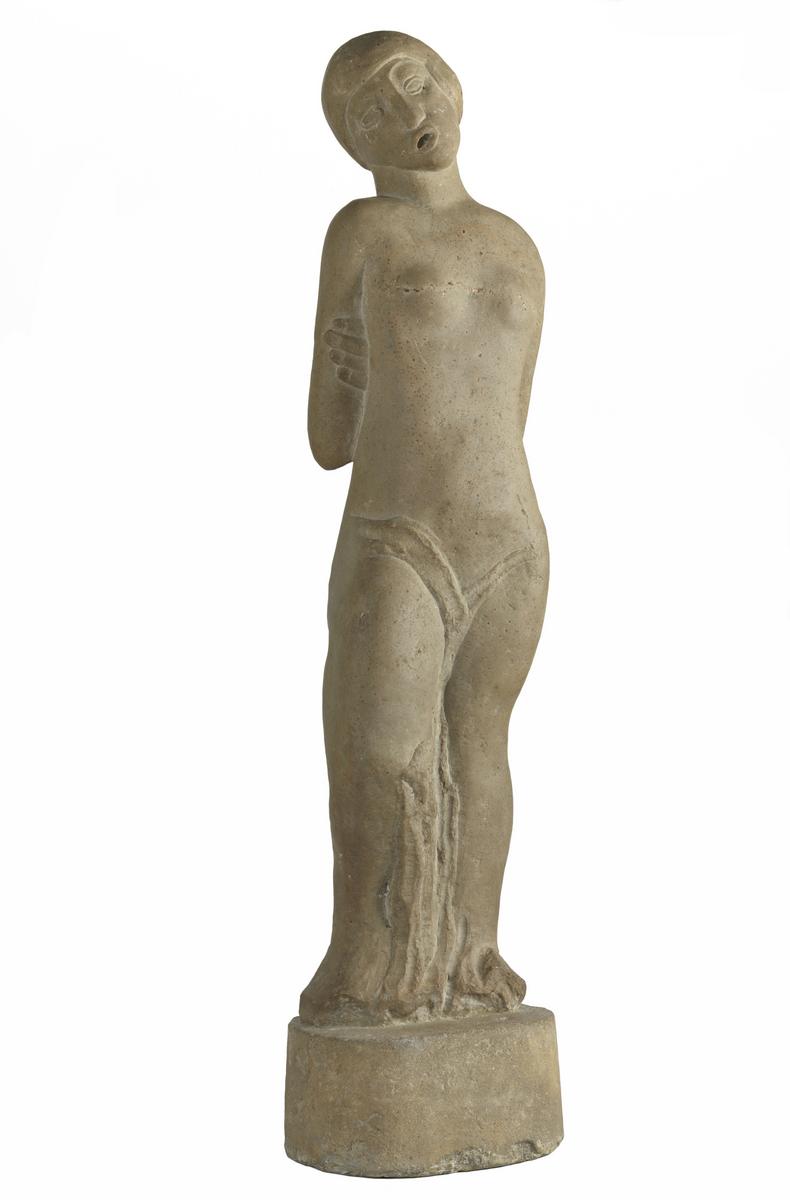
Henri Gaudier-Brzeska, Singer 1913
Gaudier-Brzeska met the sculptor Jacob Epstein in 1912, while the latter was completing his monumental stone tomb of Oscar Wilde. Following Epstein’s example, Gaudier-Brzeska began making sculptures by carving ‘direct’ into the stone block, without a preparatory model. The sinuous curves and column-like form of Singer recall medieval or archaic Greek sculpture, while the rough chisel marks around the base deliberately draw attention to its making. Gaudier-Brzeska wrote: ‘The sculpture I admire is the work of master craftsmen. Every inch of the surface is won at the point of a chisel – every stroke of the hammer is a physical and mental effort.
Gallery label, September 2024
5/21
artworks in Ethel Walker
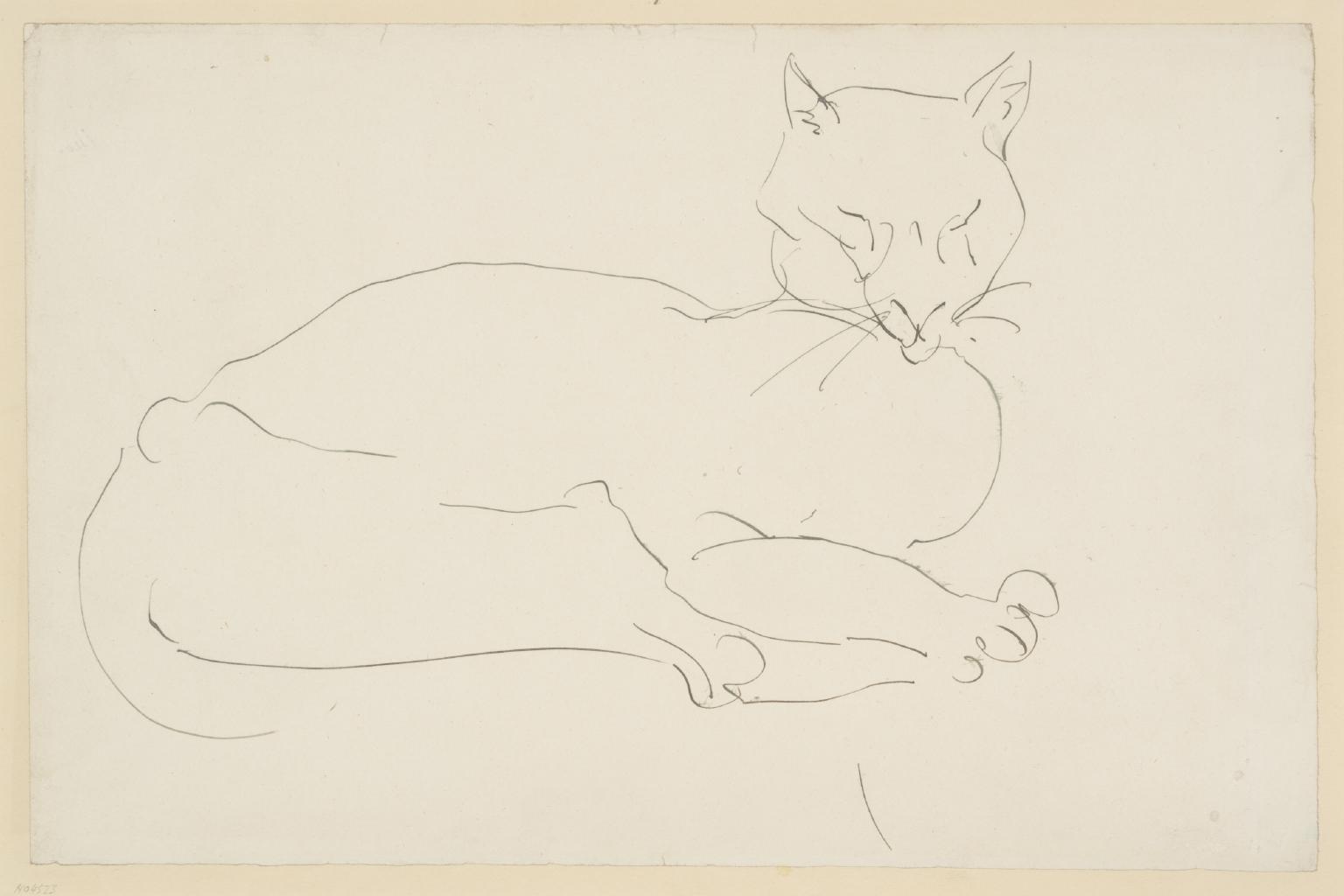
Henri Gaudier-Brzeska, Leopard II &²Ô²ú²õ±è;³¦.1912–13
For Gaudier-Brzeska, animals provided as much fascination as people. He produced an extraordinary number of animal drawings, studying their movement and behaviour in much the same way as he approached his human subjects. As well as observing birds and deer in the park, Gaudier-Brzeska regularly visited London Zoo, sketching the animals so quickly that the ink was often still wet as he turned the page. These drawings manage to capture the anatomy and personality of each animal with only a few simple lines.
Gallery label, September 2024
6/21
artworks in Ethel Walker
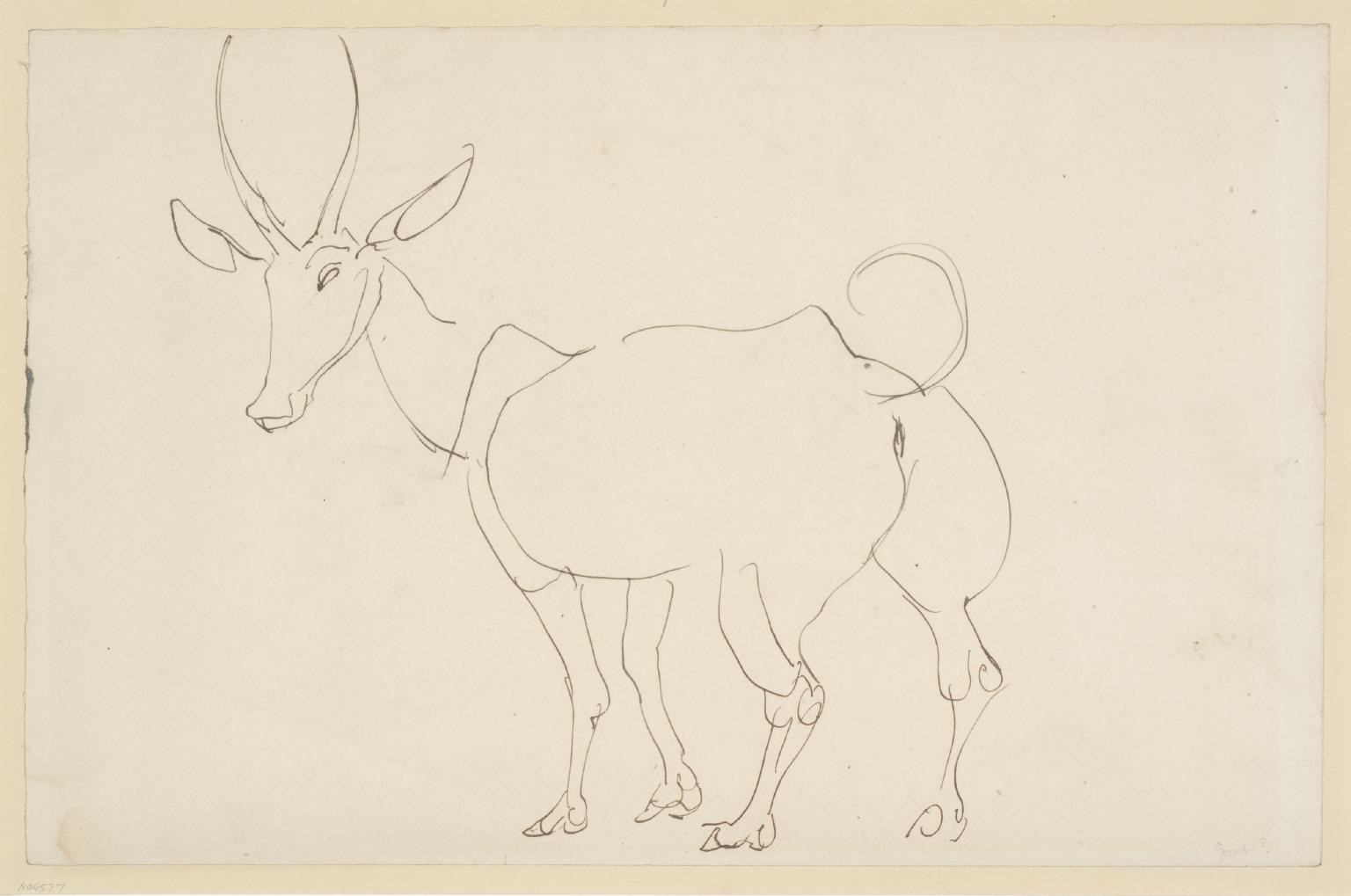
Henri Gaudier-Brzeska, Eland &²Ô²ú²õ±è;³¦.1912–13
For Gaudier-Brzeska, animals provided as much fascination as people. He produced an extraordinary number of animal drawings, studying their movement and behaviour in much the same way as he approached his human subjects. As well as observing birds and deer in the park, Gaudier-Brzeska regularly visited London Zoo, sketching the animals so quickly that the ink was often still wet as he turned the page. These drawings manage to capture the anatomy and personality of each animal with only a few simple lines.
Gallery label, September 2024
7/21
artworks in Ethel Walker
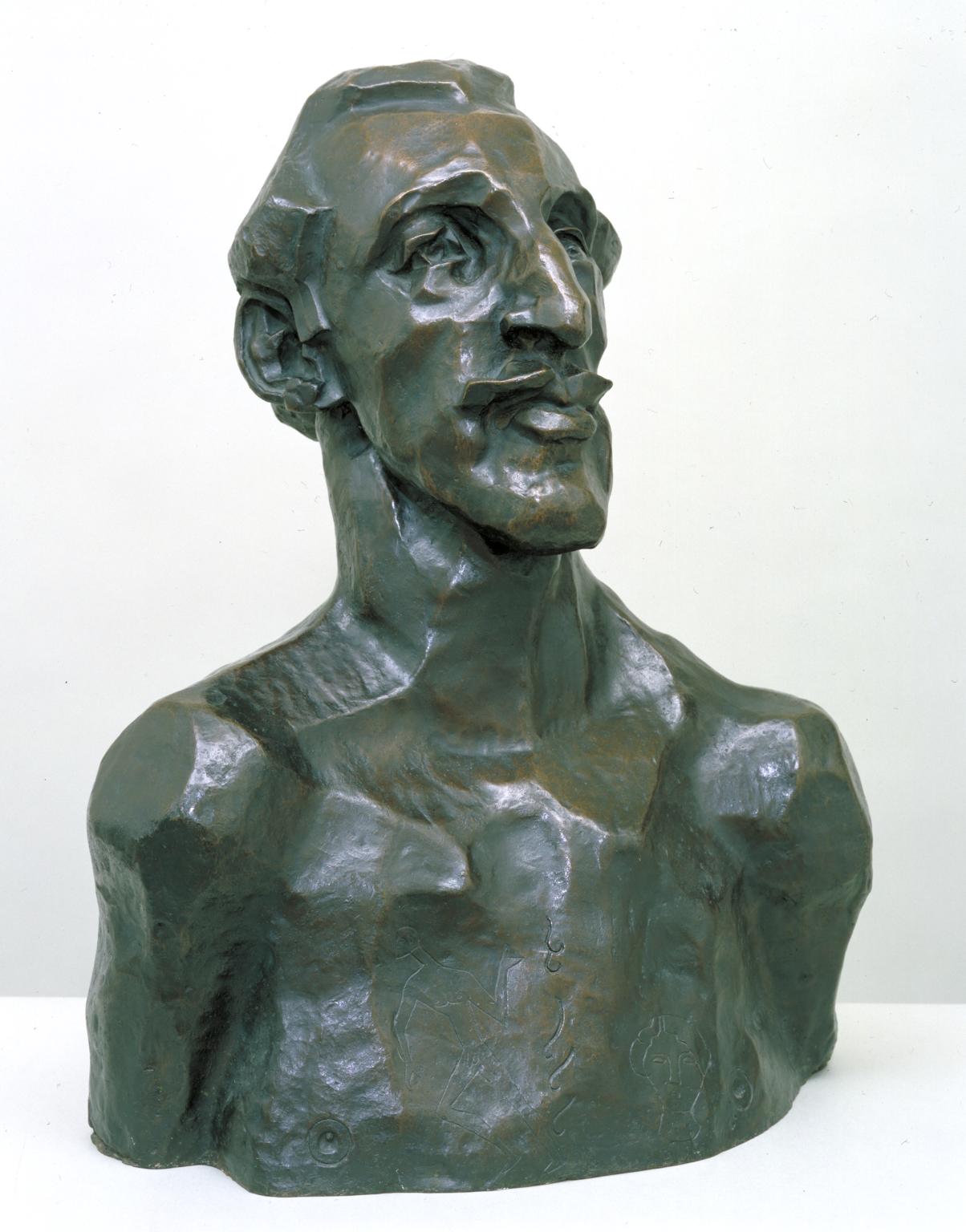
Henri Gaudier-Brzeska, Horace Brodzky 1913, cast 1956
Life in London was difficult at first for the new couple. Gaudier-Brzeska struggled to make ends meet, and they endured periods of extreme poverty. By 1913, however, GaudierBrzeska had managed to secure his own studio and a growing network of artistic and literary friends. Among these was Horace Brodzky, an Australian artist and critic. Gaudier-Brzeska sculpted this portrait of his new friend from life, exaggerating the angles and planes. According to Brodzky, the small drawings etched into the chest were added by Gaudier-Brzeska on a whim, revealing his playful and often unpredictable temperament.
Gallery label, September 2024
8/21
artworks in Ethel Walker
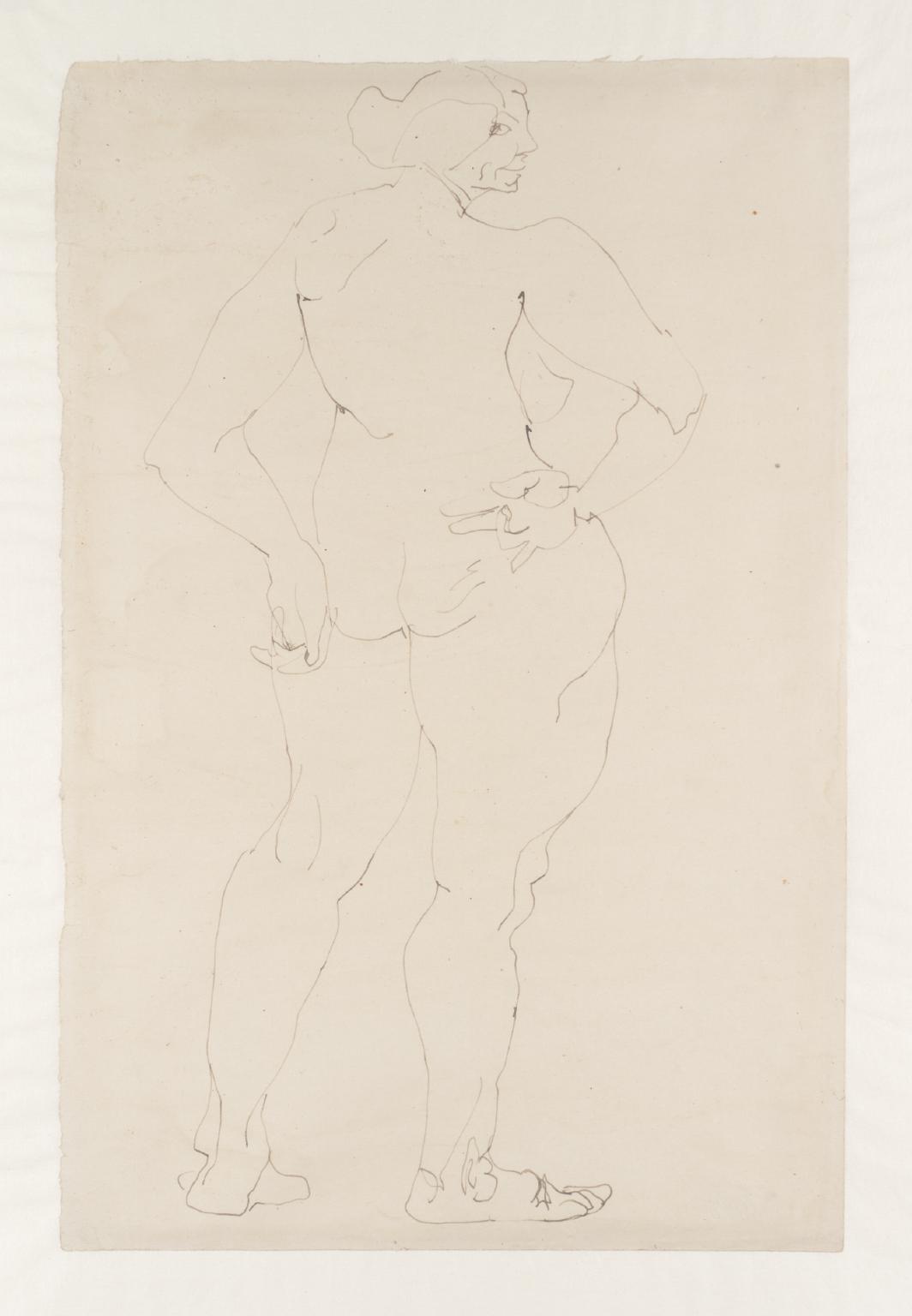
Henri Gaudier-Brzeska, Standing Female Nude, Hands on Hips 1913
In 1912, Gaudier-Brzeska began attending life drawing classes for the first time. It was a revelation. He recounted the experience in a letter to Sophie Brzeska: ‘I work without stopping – especially while the model is resting, because that is much more interesting than the poses. I do from 150 to 200 drawings each time.’ Such speed allowed GaudierBrzeska to capture a fleeting movement or gesture, using a fluid ink line to define the essential contours of the model’s body.
Gallery label, September 2024
9/21
artworks in Ethel Walker
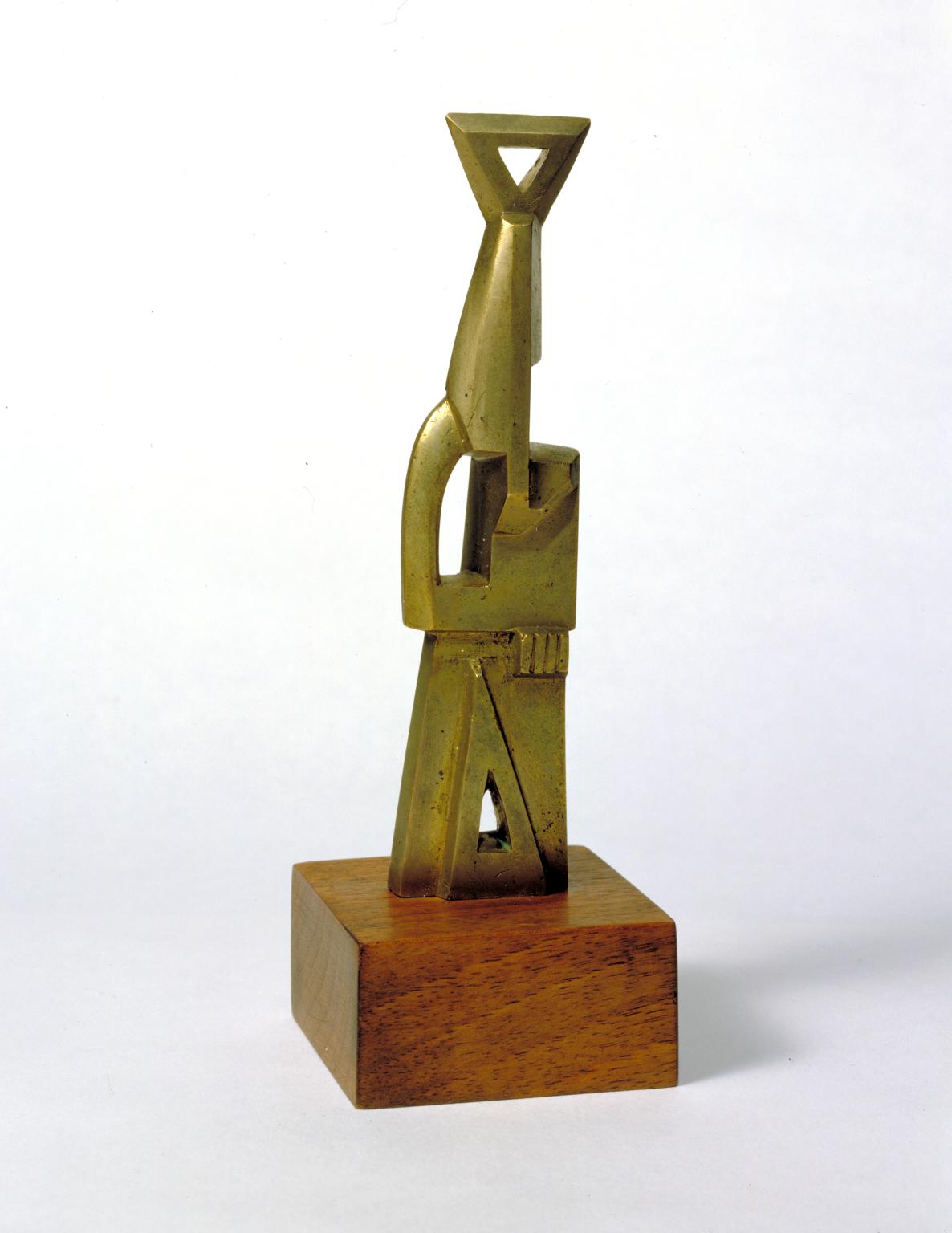
Henri Gaudier-Brzeska, Ornament 1914
In this sculpture, Gaudier-Brzeska combines his interest in nature with the vorticist artists’ emphasis on the urban and industrial world. Animal forms are reduced to an assemblage of machine-like components, while their small scale suggests something portable, like a toy or even a weapon. Ornament is sometimes given the alternative title Torpedo Fish, referring to a species of fish that electrocutes its prey. It was made for the philosopher T E Hulme, for whom Gaudier-Brzeska also designed a brass knuckleduster.
Gallery label, September 2024
10/21
artworks in Ethel Walker
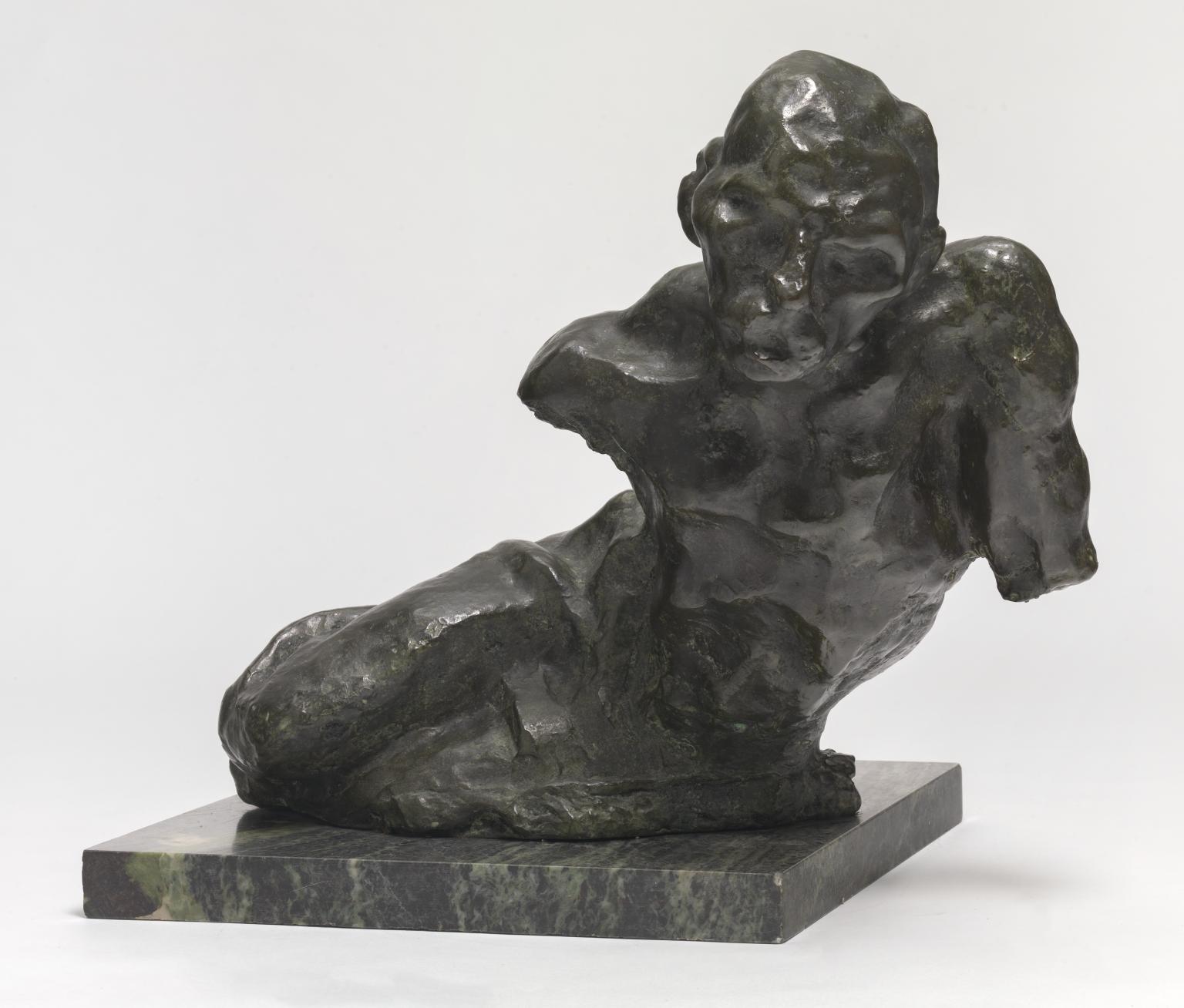
Henri Gaudier-Brzeska, Fallen Workman 1912, posthumous cast
Gaudier-Brzeska based this work on an incident he had witnessed in Paris, when a workman fell from a scaffold. The original version had arms, portraying the injured figure raising himself off the ground. GaudierBrzeska first sculpted the figure in clay, which was later cast in plaster and then bronze. The fluid, vigorous modelling reflects his deep admiration for Auguste Rodin, whose sculpture of John the Baptist he praised in a letter to Sophie Brzeska: ‘he belongs to my own time, is in my epoch, he has a 20th-century workman’s body just as I see it and know it’.
Gallery label, September 2024
11/21
artworks in Ethel Walker
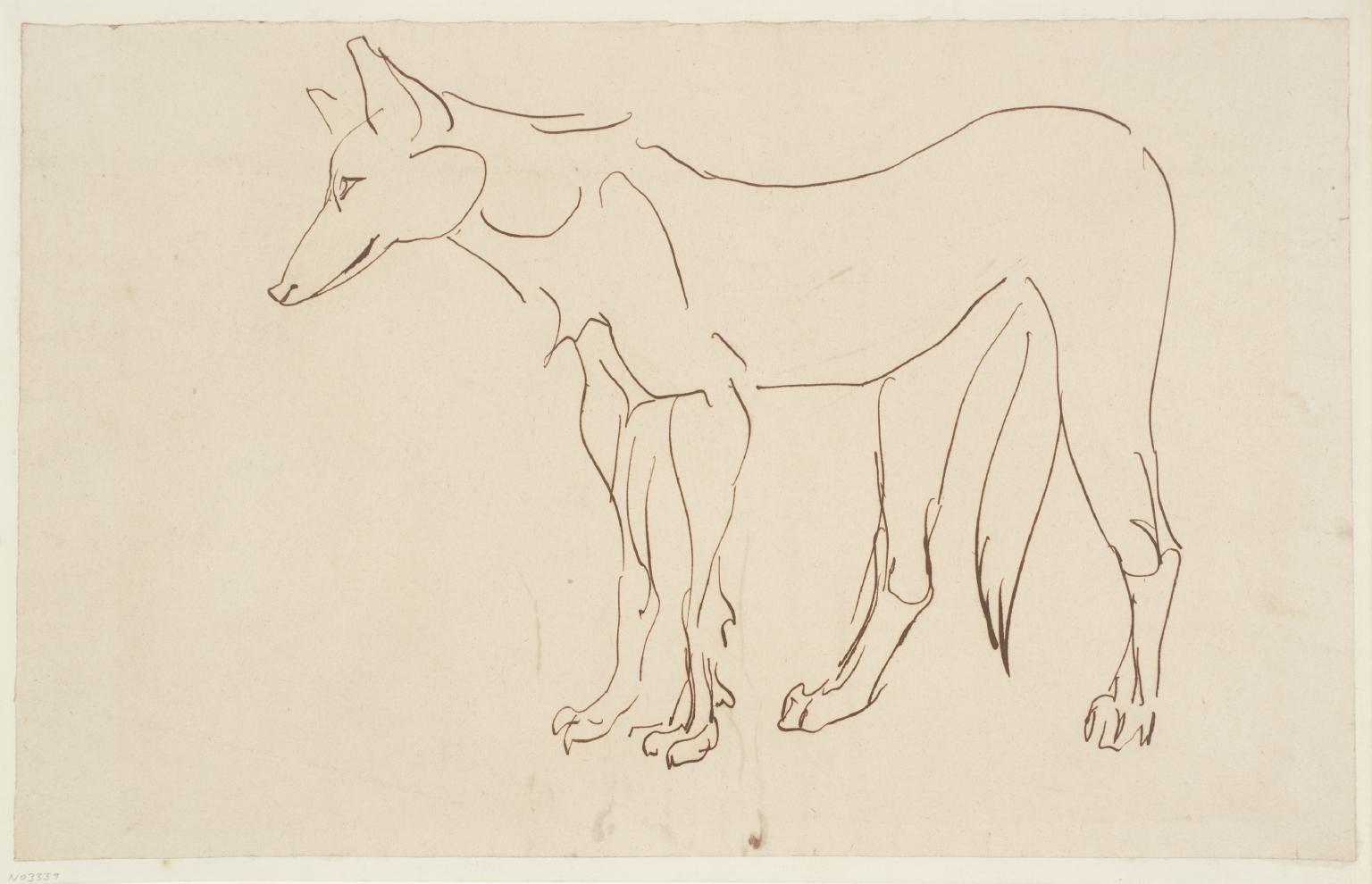
Henri Gaudier-Brzeska, A Wolf 1913
For Gaudier-Brzeska, animals provided as much fascination as people. He produced an extraordinary number of animal drawings, studying their movement and behaviour in much the same way as he approached his human subjects. As well as observing birds and deer in the park, Gaudier-Brzeska regularly visited London Zoo, sketching the animals so quickly that the ink was often still wet as he turned the page. These drawings manage to capture the anatomy and personality of each animal with only a few simple lines.
Gallery label, September 2024
12/21
artworks in Ethel Walker
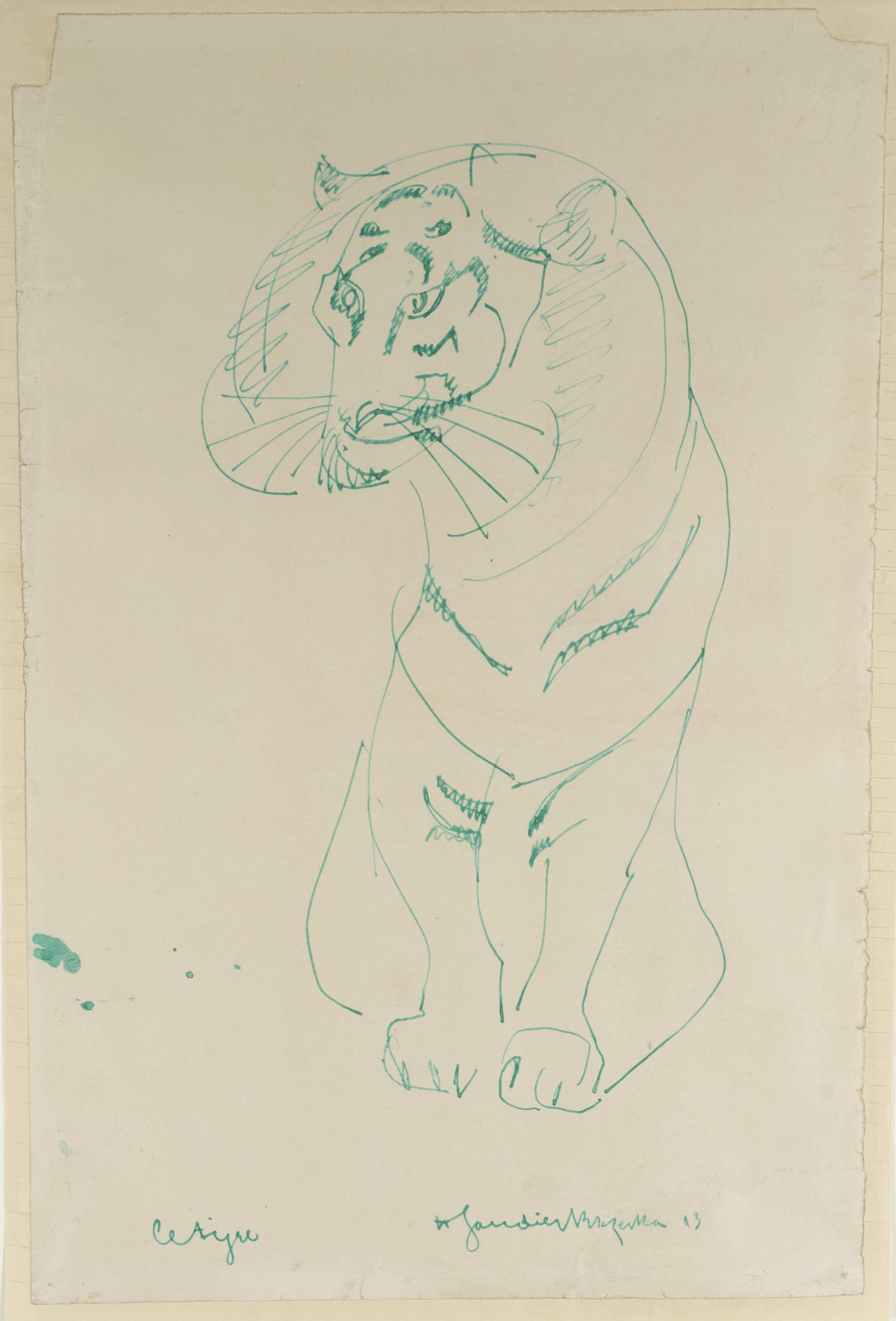
Henri Gaudier-Brzeska, Tiger 1913
For Gaudier-Brzeska, animals provided as much fascination as people. He produced an extraordinary number of animal drawings, studying their movement and behaviour in much the same way as he approached his human subjects. As well as observing birds and deer in the park, Gaudier-Brzeska regularly visited London Zoo, sketching the animals so quickly that the ink was often still wet as he turned the page. These drawings manage to capture the anatomy and personality of each animal with only a few simple lines.
Gallery label, September 2024
13/21
artworks in Ethel Walker
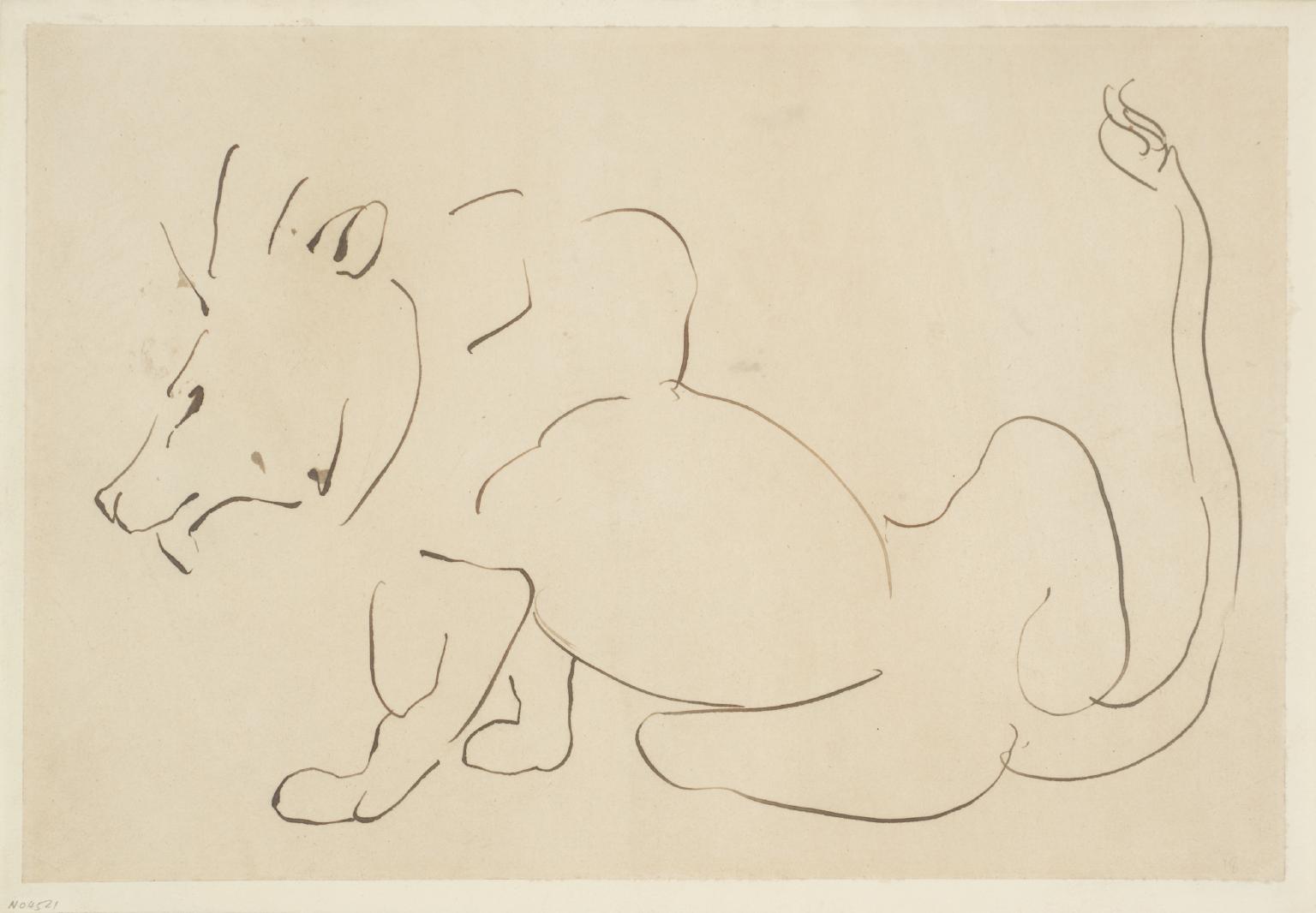
Henri Gaudier-Brzeska, Lion &²Ô²ú²õ±è;³¦.1912–13
For Gaudier-Brzeska, animals provided as much fascination as people. He produced an extraordinary number of animal drawings, studying their movement and behaviour in much the same way as he approached his human subjects. As well as observing birds and deer in the park, Gaudier-Brzeska regularly visited London Zoo, sketching the animals so quickly that the ink was often still wet as he turned the page. These drawings manage to capture the anatomy and personality of each animal with only a few simple lines.
Gallery label, September 2024
14/21
artworks in Ethel Walker
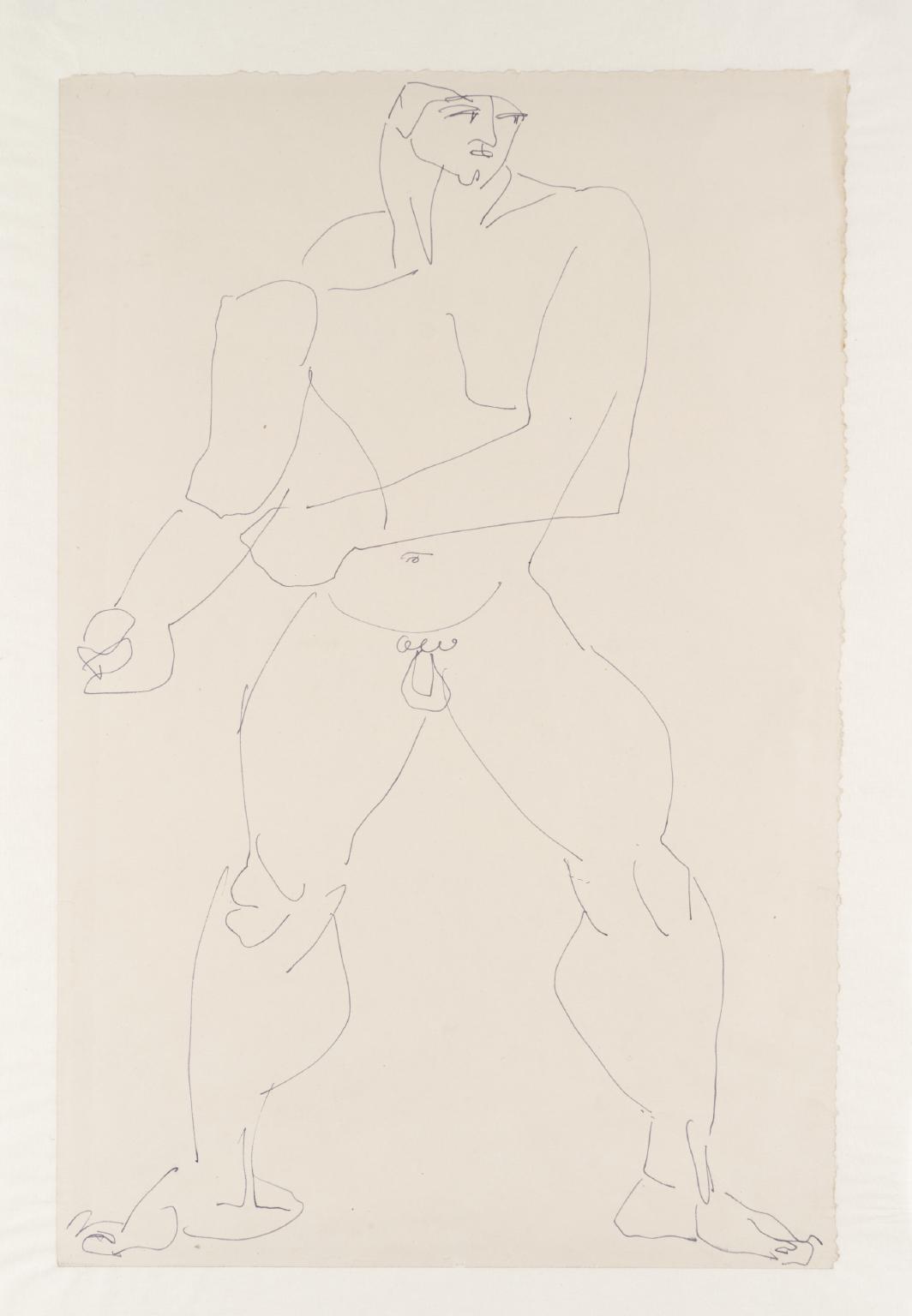
Henri Gaudier-Brzeska, Wrestler 1913
Around the time Gaudier-Brzeska joined the life drawing class, he began sketching at a wrestling club in London. He was enthralled by the wrestlers’ power and dynamism, writing, ‘They fought with amazing vivacity and spirit, turning in the air, falling back on their heads, and in a flash were up again on the other side, utterly incompressible.’ This drawing may have been done at the wrestling club, or perhaps at the life class, where wrestlers and boxers sometimes posed as models. The delicacy of line contrasts with the strength of the subject, whose muscular figure occupies the entire page.
Gallery label, September 2024
15/21
artworks in Ethel Walker
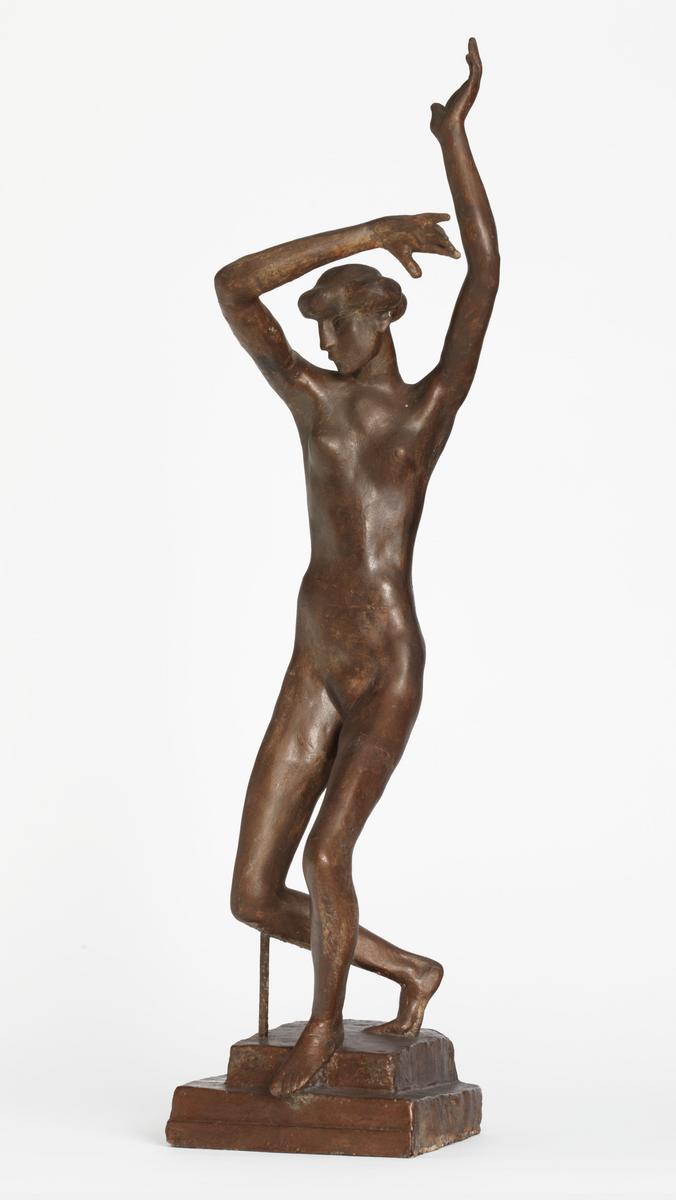
Henri Gaudier-Brzeska, The Dancer 1913
Here, Gaudier-Brzeska captures a feeling of improvisation and spontaneity: the nude dancer throws her arms above her head and bends her knees, almost stepping off her pedestal. It has been suggested that the figure was modelled on the artist Nina Hamnett, who Gaudier-Brzeska met soon after arriving in London. In Hamnett’s autobiography, she describes dancing naked on the tables of a Parisian café. Hamnett was also admired by Isadora Duncan, one of the originators of modern ‘free’ dance that emphasised natural movements and bare feet.
Gallery label, September 2024
16/21
artworks in Ethel Walker
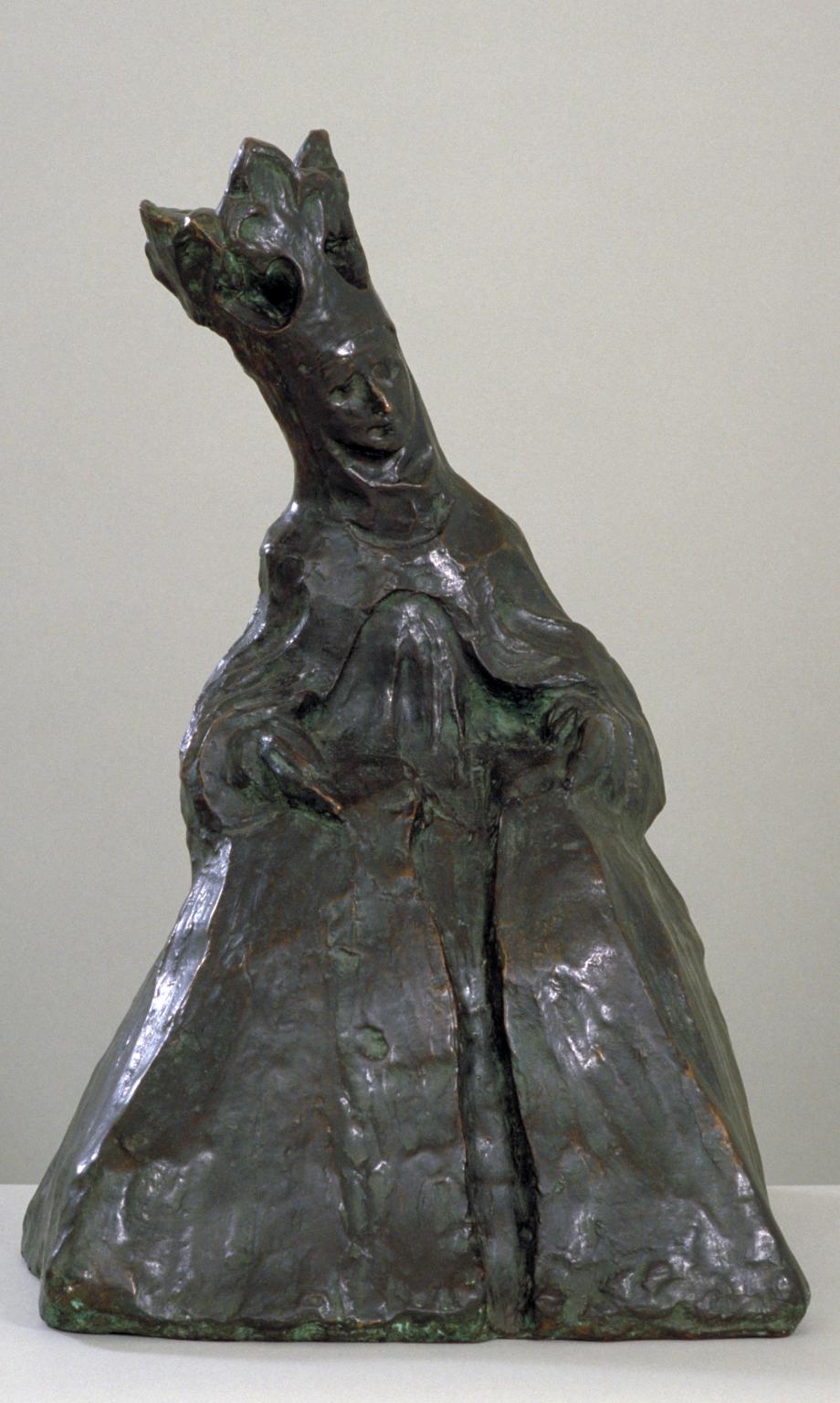
Henri Gaudier-Brzeska, Madonna 1912, cast 1960s
This sculpture was Gaudier-Brzeska’s first official commission, for the publisher and critic Thomas Leman Hare. He approached Gaudier-Brzeska to produce a statuette of the actress Maria Carmi in her role as the Madonna in the play The Miracle. Staged at Olympia London, the production was an enormous spectacle featuring around 1,700 performers, and Hare hoped to capitalise on its popularity. Although the commission symbolised a breakthrough in GaudierBrzeska’s career, it was not the commercial success they had hoped for, and the intended edition of 100 bronzes was never produced.
Gallery label, September 2024
17/21
artworks in Ethel Walker
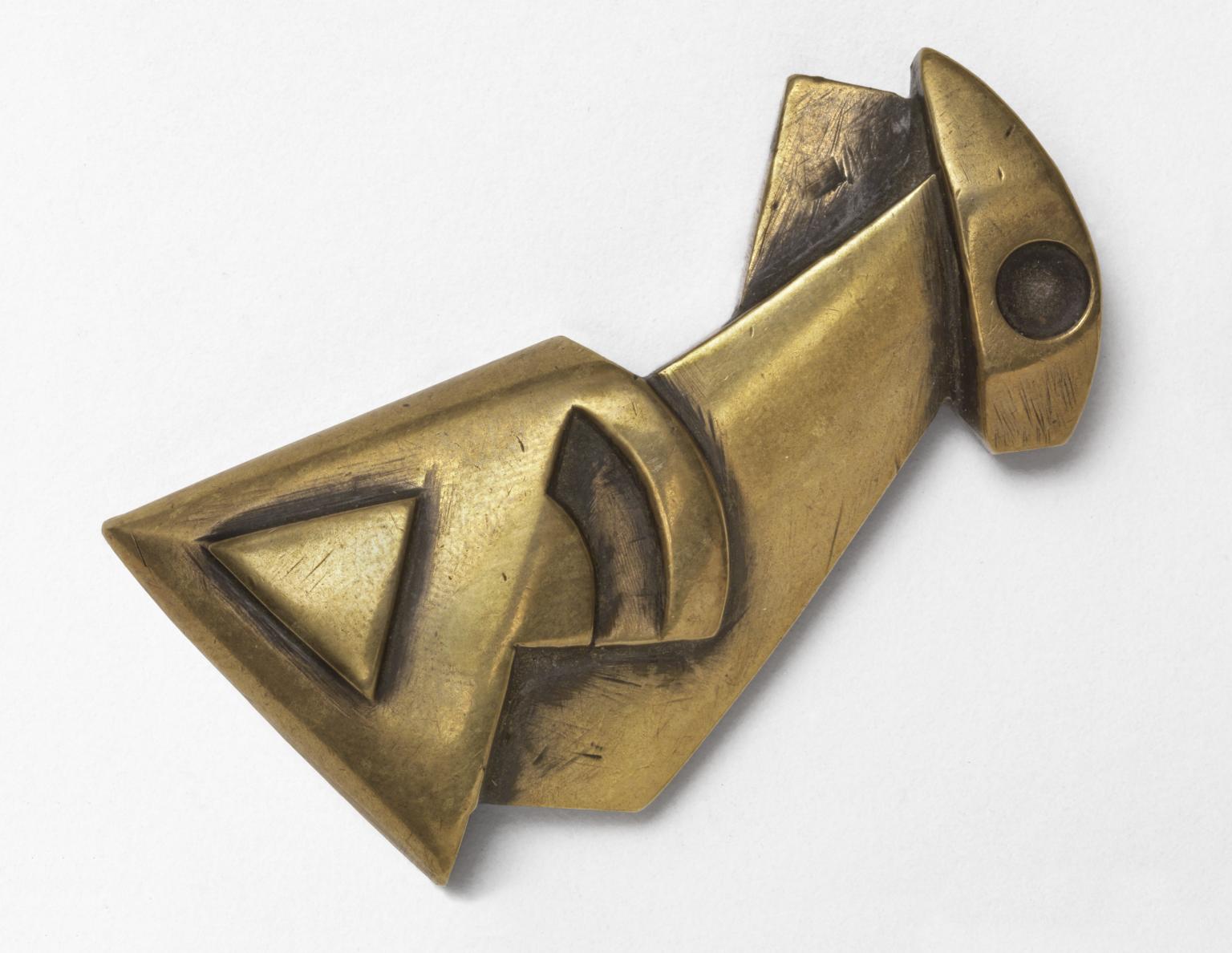
Henri Gaudier-Brzeska, Fish 1914
In this sculpture, Gaudier-Brzeska combines his interest in nature with the vorticist artists’ emphasis on the urban and industrial world. Animal forms are reduced to an assemblage of machine-like components, while their small scale suggests something portable, like a toy or even a weapon.
Gallery label, September 2024
18/21
artworks in Ethel Walker
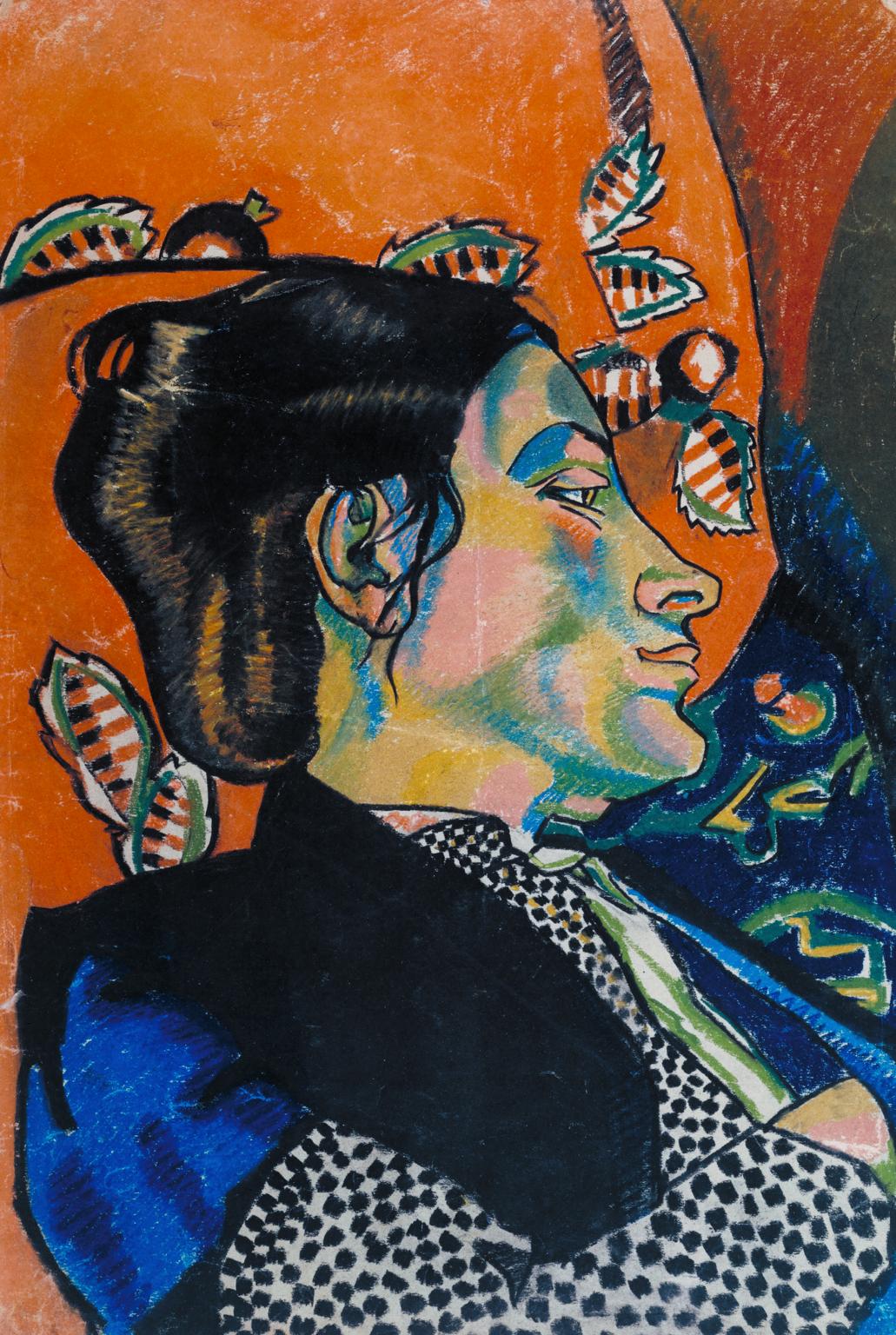
Henri Gaudier-Brzeska, Sophie Brzeska 1913
Gaudier-Brzeska met the Polish writer Sophie Brzeska in Paris in 1910. They moved to London together the following year, and Gaudier added Brzeska’s surname to his own, although the couple never married. In this portrait, he uses areas of brightly contrasting colour to convey the contours of Brzeska’s face and hair. The bold use of colour and pattern was strongly influenced by artists like Paul Gauguin, and echoes the decorative designs that Gaudier-Brzeska was producing for Roger Fry’s Omega Workshops around this time.
Gallery label, September 2024
19/21
artworks in Ethel Walker
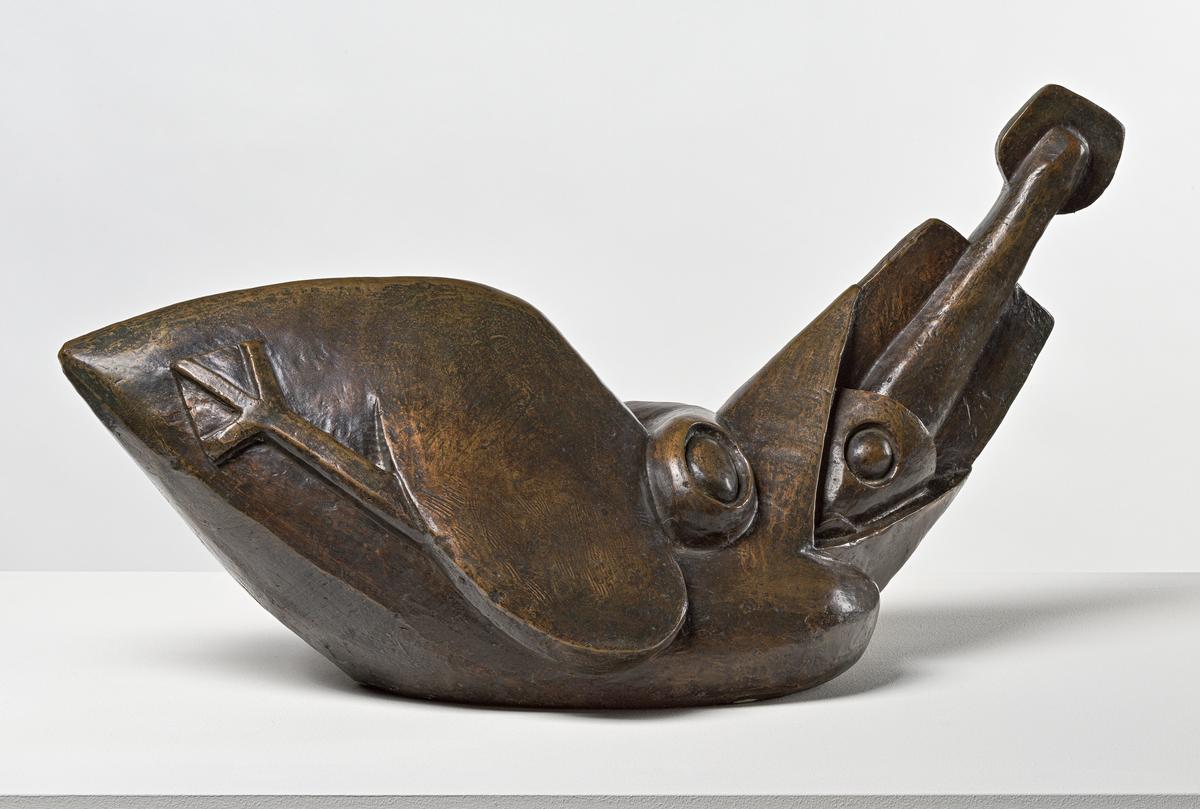
Henri Gaudier-Brzeska, Bird Swallowing a Fish c.1913–14, cast 1964
This sculpture resulted from a visit to the Serpentine Lake in Hyde Park, where GaudierBrzeska observed a bird struggling to swallow a fish whole. By 1914, Gaudier-Brzeska was a central member of the newly-formed Vorticist group, led by the artist Wyndham Lewis. The sculpture’s sharp geometric forms and tense energy reflect the group’s fascination for the power and aggression of the machine age. Here, Gaudier-Brzeska takes a subject from the natural world and imbues it with a sense of violence and menace: while the fish might be inches from death, it could equally be choking the bird.
Gallery label, September 2024
20/21
artworks in Ethel Walker
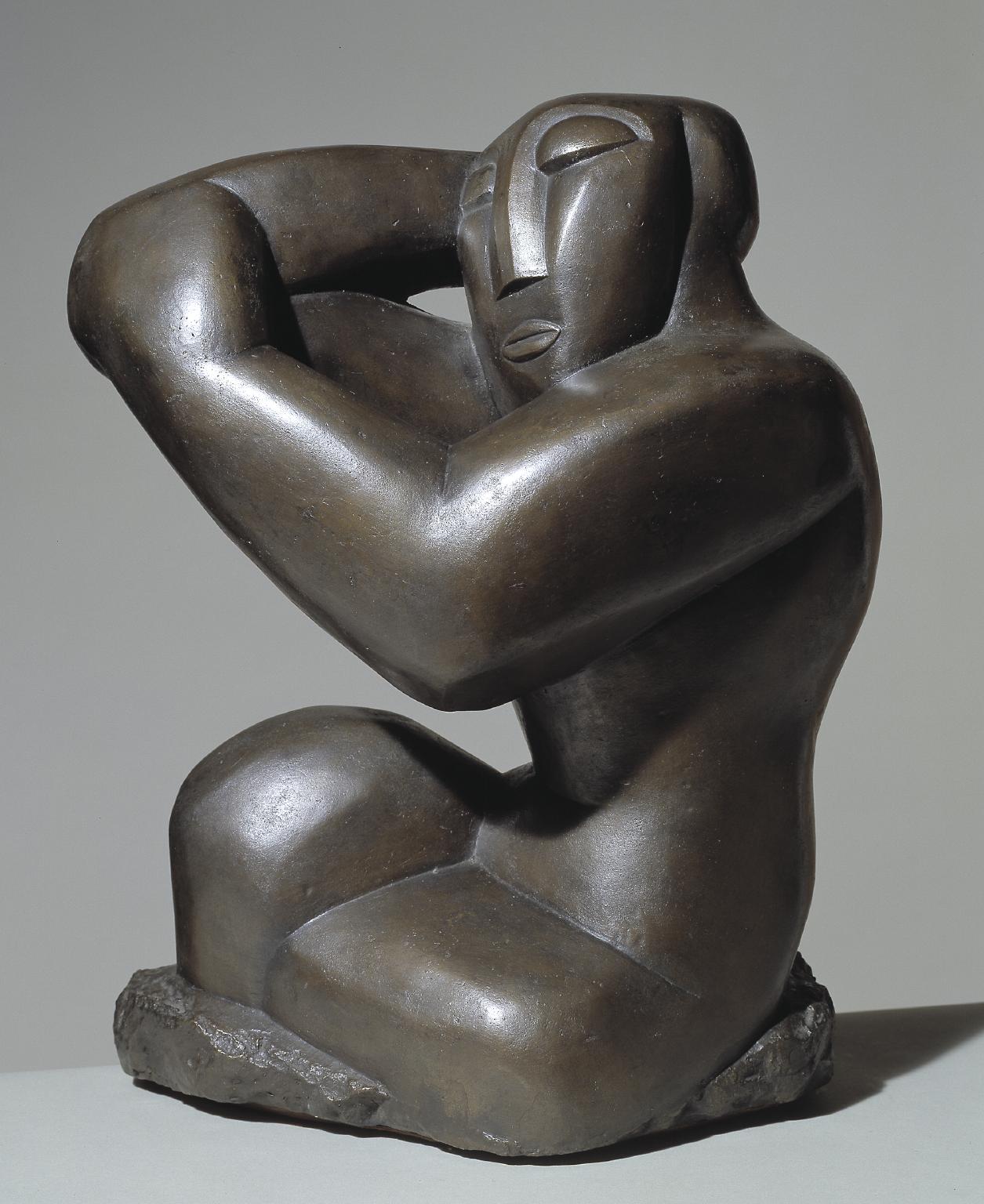
Henri Gaudier-Brzeska, Seated Woman 1914, posthumous cast
Originally carved from white marble, this was one of the last sculptures GaudierBrzeska completed before he left for the trenches. It reflects his admiration for the work of Constantin Brancusi and Jacob Epstein, with their use of sleek, polished forms and emphasis on carving directly in stone. Like them, Gaudier drew inspiration from African and Oceanic sculpture that he encountered in ethnographic collections such as the British Museum.
Gallery label, September 2024
21/21
artworks in Ethel Walker
Art in this room





















You've viewed 6/21 artworks
You've viewed 21/21 artworks
